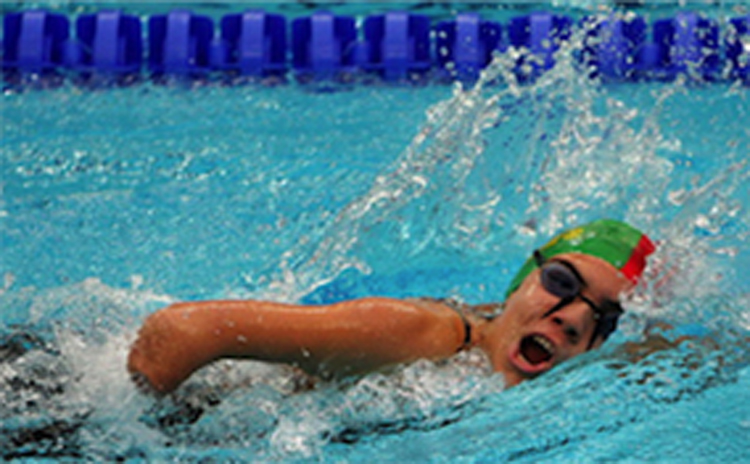
Summer should be a time of activity and fun, not stress. But for some, heading to the pool even just to swim some leisurely laps can be a source of discomfort. It’s long been documented that spondylolysis–a form of arthritis of the spine–is common among swimmers, and can be exacerbated by improper swimming technique, especially if you swim a lot. The butterfly and breaststroke in particular are known for causing other lower back problems in swimmers, according to Livestrong.com.
If you love summer swimming and would like to keep it that way, try taking a step back and going back to the basics for a bit. Sure, there can be many other sources of nagging back pain, but bad swimming technique means you’re moving along inefficiently and wearing out muscles that are crucial to your recovery.
Freestyle may be one of the most “elementary” strokes, but it’s also the most low-impact. By honing your freestyle swimming technique and establishing proper biomechanics, you can enjoy a healthy swimming season and continue your daily activities with minimal interference from back pain. Here are five essential elements of a mechanically sound freestyle stroke:
Keep Your Head Up
Many swimmers tend to bury their heads in their chest when swimming–this can put unneeded stress on the back, as it functionally serves as a 25-pound resistance weight. Try starting your stroke by looking directly ahead, with your hairline just breaking above the surface of the water. Your body should be parallel to the floor of the pool, with your neck and upper-back muscles relaxed.
Full Extension
Back problems among swimmers can arise due to inefficient arm movement. Not involving your shoulder enough in your movements can lead to a short, choppy stroke that doesn’t propel you forward enough.
With each stroke, extend your arm to its maximum length, and reach forward a few more inches from your shoulder toward the end of your stroke. Pretend you’re trying to touch a ceiling that’s just beyond your reach. This will help you develop a smooth, efficient, long stroke that will reduce stress on the rest of your body, including your back.
“Tilt on a Spit”
Alex Kostich, a former Pan-American games gold medalist and contributor to Active.com, compares the proper rotation of the body in the freestyle stroke to that of a “rotisserie chicken on a spit.”
With each forward stroke, you should be pivoting your body to facilitate that shoulder extension we mentioned earlier. When your right arm reaches full extension and your left is about to leave the water behind you, your body should be rotated to the right–meaning your right side should be fully submerged in the water, with your left side facing upward. Then, with the next stroke, rotate your body about 120 degrees in the opposite direction.
“Draw” an Hourglass
One of the keys to swimming efficiently is maximizing the amount of water you pull with your arms. But if your arms only move in straight lines, they’re not pulling as much water as they’re capable of.
Instead, at the beginning of each stroke, start with your hands further out, away from your body. As you begin to pull water, slightly curve your hand toward your stomach, and then outward again as your hand approaches your hip and exits the water. If you were to do this motion with both arms simultaneously, it would resemble an “hourglass” shape.
Finish the Stroke
One of the most common mistakes that even experienced swimmers make is shortening their strokes as they become fatigued. Remember that as your arms are finishing up that hourglass movement, they should be extended fully behind you at your sides so that your thumbs reach your thighs. Other swimmers might bend their elbows as they finish their stroke, pulling their arms out before they finish drawing the hourglass. Full extension at the end of the stroke reduces the amount of energy you expend and reduces stress on the joints and back.
Learn more about how to relieve lower back pain with ActivAided, our posture training shirt, or browse our online shop.
Have questions about ActivAided? Send a message to our team.
